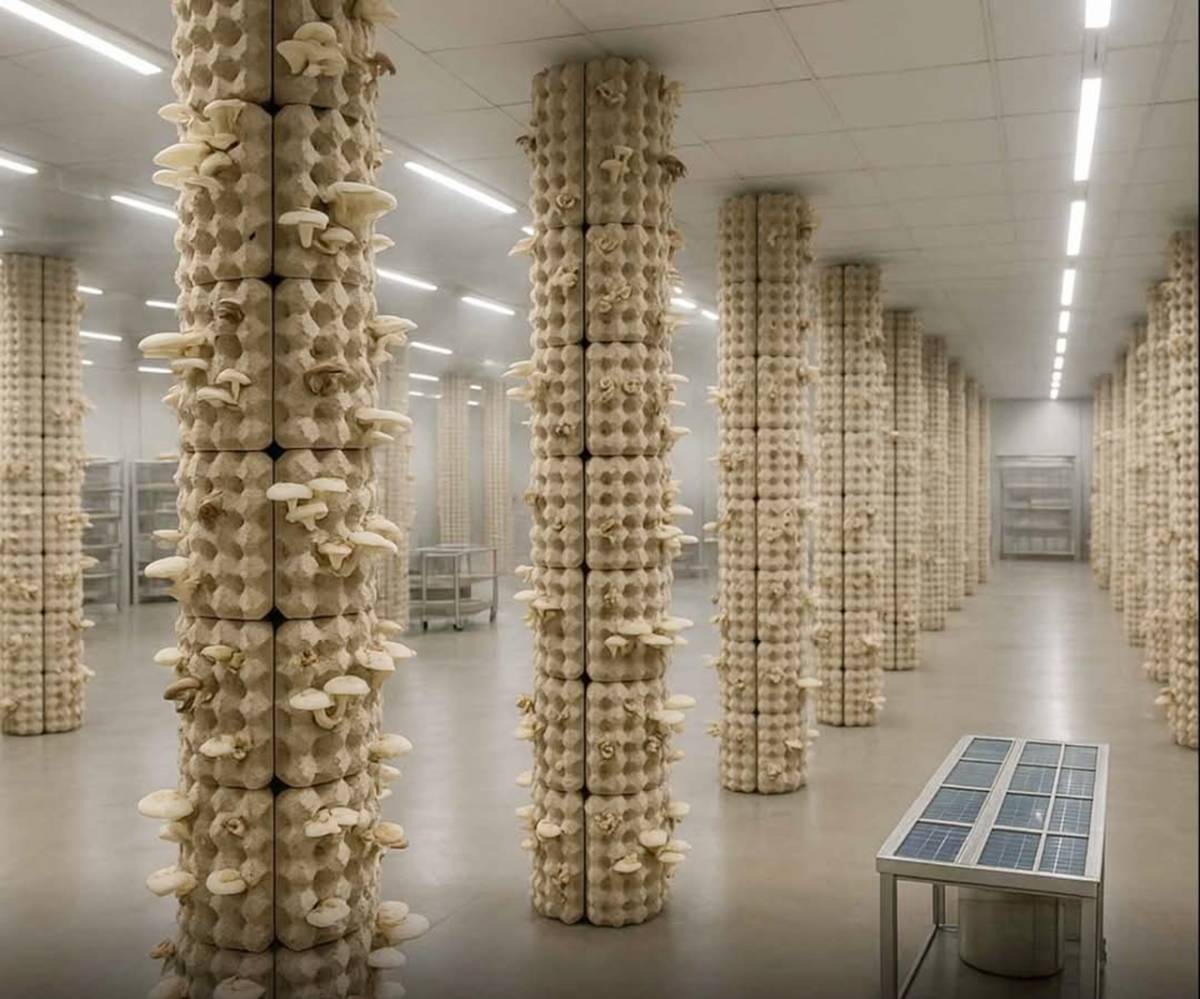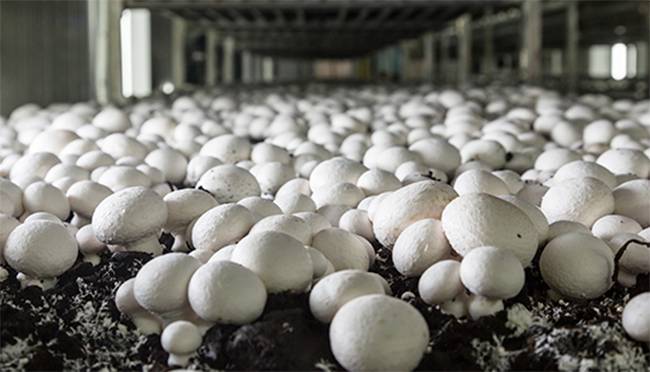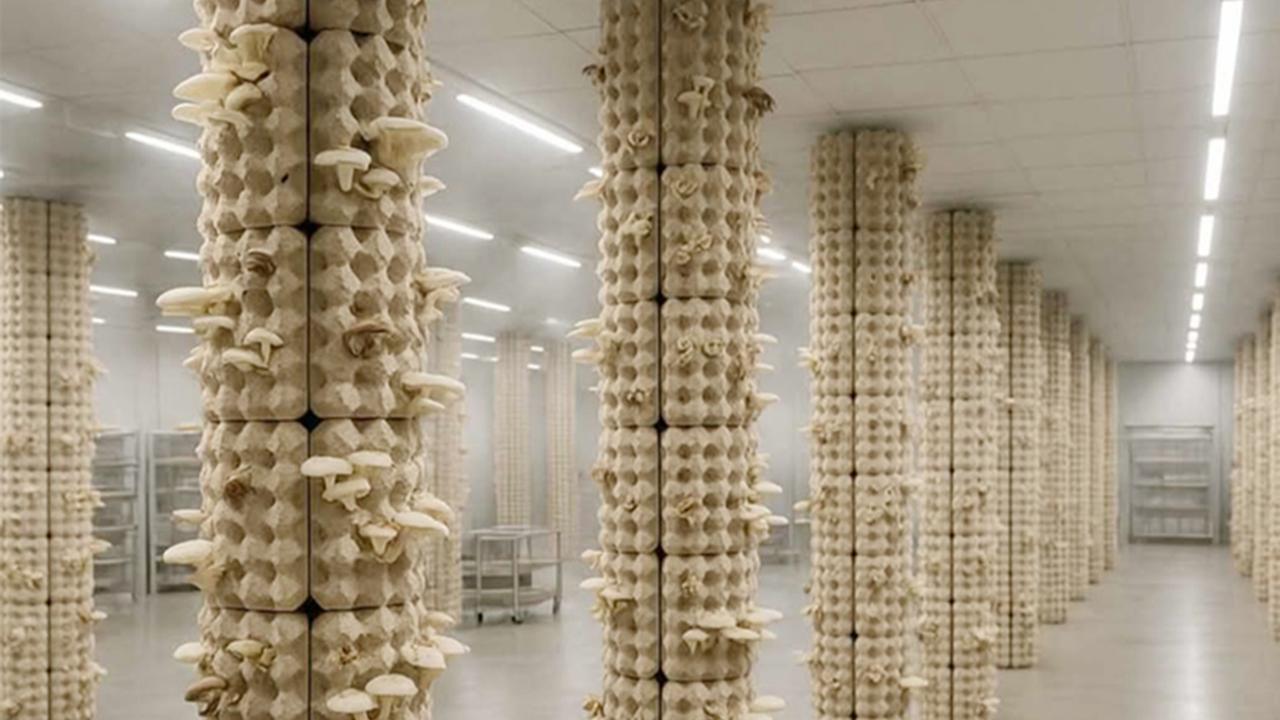Vertical mushroom farming transforms Dutch agriculture
These eco-friendly towers are transforming how farmers produce mushrooms like oyster, shiitake, and lion’s mane, proving that sustainability and productivity can go hand in hand.
The concept is simple but revolutionary. Instead of flat beds or plastic grow bags, used egg cartons are compressed and molded into tall, porous columns that reach from floor to ceiling. The design not only saves space but also recreates the cool, damp, and dark environment mushrooms thrive in. This approach aligns perfectly with the Netherlands’ commitment to circular farming—where every waste product finds a new purpose and efficiency drives every innovation.
Turning waste into a valuable farming resource
One of the most remarkable aspects of this vertical mushroom farming system is its use of waste materials. The egg cartons that form the structure of these towers are made from recycled paper pulp—an abundant and biodegradable resource. Rather than being discarded, these cartons are given a second life as the foundation for a sustainable agricultural system.
Because the egg carton material is porous, it retains moisture while allowing air to flow freely through the columns. This balance is essential for mushroom health, preventing excess humidity that could lead to mold or bacterial growth. The texture of the recycled paper also provides a perfect surface for spores to latch onto and expand, allowing mushrooms to grow evenly across the structure.

This method eliminates the need for plastic trays or bags that are commonly used in industrial mushroom farming. By cutting out plastic entirely, Dutch farmers are reducing both production costs and environmental waste, moving closer to the goal of a fully circular agricultural economy.
A perfect environment for mushrooms to thrive
Mushrooms are known for their sensitivity to environmental conditions. They need humidity, limited light, and steady airflow to grow successfully. The egg carton columns meet these requirements naturally. The recycled material acts as both a moisture reservoir and a breathable wall, creating a microclimate that supports consistent growth from top to bottom.

Different mushroom species have adapted beautifully to this new setup. Oyster mushrooms, known for their fast growth and high yield, flourish along the sides of the columns. Shiitake mushrooms, which require more time and nutrients, benefit from the structure’s ability to retain moisture evenly. Even the delicate lion’s mane mushroom—prized for its culinary and medicinal properties—thrives in this stable, chemical-free environment.
Some systems are also experimenting with organic substrates like coffee grounds, sawdust, and plant waste. These nutrient-rich materials provide additional nourishment for the fungi and help repurpose urban and agricultural byproducts that would otherwise go to waste.
Compact design brings farming into cities
One of the major advantages of this vertical mushroom farming technique is its adaptability to urban environments. Since the towers require minimal space, they can be installed in unused warehouses, empty shipping containers, or even abandoned buildings. This makes mushroom cultivation accessible in densely populated cities where traditional farming isn’t feasible.
Hydroponic systems can be integrated to control moisture and nutrients automatically, creating a nearly self-sustaining ecosystem. The combination of vertical design, efficient water use, and renewable materials allows farmers to achieve high yields even in small spaces. It’s a clear example of how cities can embrace urban agriculture to become more self-reliant and environmentally friendly.
By utilizing existing structures and renewable materials, the Netherlands is redefining what sustainable farming can look like. This approach not only cuts down on transportation emissions but also supports local food production close to consumers.
The future of circular farming in the Netherlands
The vertical mushroom towers are more than just an innovative growing method—they represent a broader movement toward circular farming, a model where waste becomes a resource and efficiency is maximized. The Netherlands has long been a global leader in sustainable agriculture, and these mushroom towers are the latest example of its forward-thinking approach.
By turning humble egg cartons into a key agricultural tool, Dutch farmers are reducing landfill waste, cutting out plastic, and growing high-quality food in small spaces. This combination of creativity, resourcefulness, and environmental responsibility is setting a new global standard for sustainable agriculture.
As the world searches for ways to feed growing populations without harming the planet, the Dutch model demonstrates how innovation can sprout from the simplest materials. These vertical mushroom farms are not only producing nutritious food but also cultivating a future where farming and sustainability rise together—literally.















Yorumlar
Kalan Karakter: